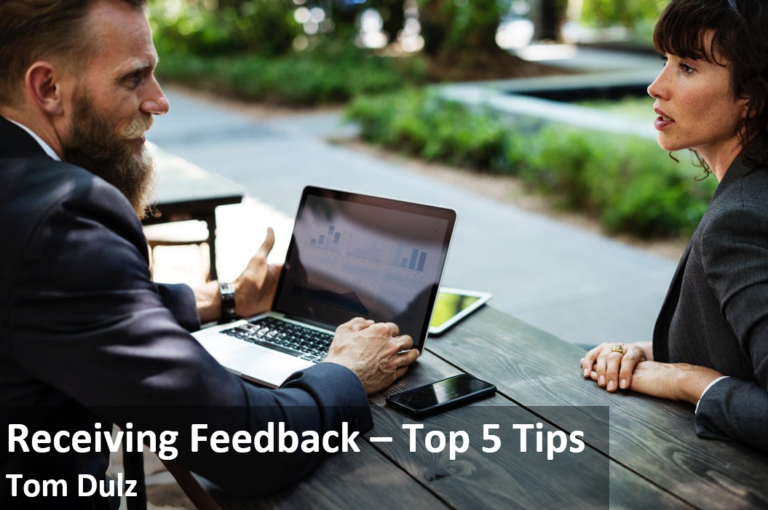
The situation, when somebody tells us that we did not behave well (non-positive feedback) is not a pleasant one. At the same time, we are getting key information when it comes to our Personal Development. Receiving feedback can help us to identify areas for improvement. Although it is not an easy task, it is worth an effort.
First, why this article is about receiving feedback, not giving it? We’ll I do agree with Stephen Covey that first you need to understand another person before you will expect to be understood. Thus effective listening (receiving feedback) is far more important than effective communicating (giving feedback). Having said that, I believe that both are important and strongly correlate to each other. Thus, my next article (in April) will be dedicated to giving feedback.
Now, let’s looks at some tips on how to effectively receive a feedback:
- Do Listen! – First and foremost, you need to listen person who is giving you a feedback. Listen not to prepare your reply, but listen to understand the message that is being said. Try to put yourself in that person’s shoes – understand their perspective. Also, active listening helps: keep eye contact, use open body language (do not cross arms or legs). Ask clarifying questions and summarize what you have heard to make sure you are on the same page.
- Say thank you! – The worst thing you could do would be to argue and reject feedback during the conversation. Even if you disagree with what is being said do not take a defensive Instead, say thank you for providing the feedback. Consequences will be twofold:
- Remember that giving feedback is not an easy task, thus such approach will make this conversation easier and more valuable – you will get better information about yourself.
- Additionally, you will instantly start building relation with the giver. That normally would be a challenge, if you are receiving a non-positive message in the first place.
- Be open minded – do not make assumptions on intentions of the giver. Remember about the first point and always refer to what you have heard, not assumed. Also, use feedback to assess your own behavior. Do not assume you know everything about yourself. Use the information that you receive to broaden your self-awareness. Even if you feel very strong about your point of view, staying open minded in will help you to manage your perceptions.
- Do not rush into decision – give yourself two or three days to decide what to do with information received. Should you change your behavior? If yes, how to do it? On the other hand, ultimately you may want to ignore feedback received. But to be sure about this ask yourself a few questions:
- Have you received similar feedback from anyone else?
- What is the giver’s expertise or credibility in an area that was subject to a feedback?
- Is anything of what has been communicated close to how you feel about yourself? Have you identified similar development areas?
- Should you discuss it with your boss / mentor / friend?
- Act upon your decision – Regardless whether you decide to act on feedback or not, be mindful of your behaviors that were highlighted. Maybe over time, you will understand this feedback better. If you decide to work on area highlighted by the giver, make sure you progress with the change. Also go back to the feedback giver and let him/her know that you agree with what was being said and that you work on that area. It will strengthen you relation and encourage more constructive feedback in future. All that will help you to grow further.
Hope that above will help you to go through feedback conversations. Remember receiving a feedback is a way to understand how you are perceived and where you could (or even should) develop yourself. Do not avoid such situations, but treat them as opportunities for further self-development and relation building.
Let me know in comments if you had such feedback conversations and what good tips you could share. Also, any feedback on above-mentioned points is very much appreciated. If you found this article interesting go ahead and share it via social media buttons on the top right-hand site of this page.
Best,
Tom
